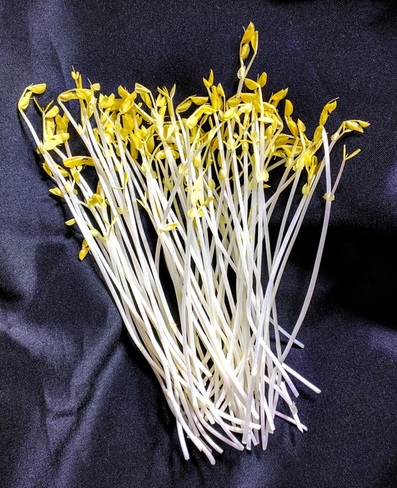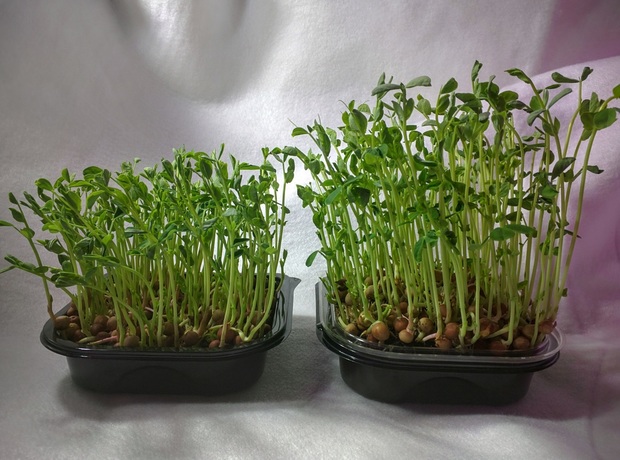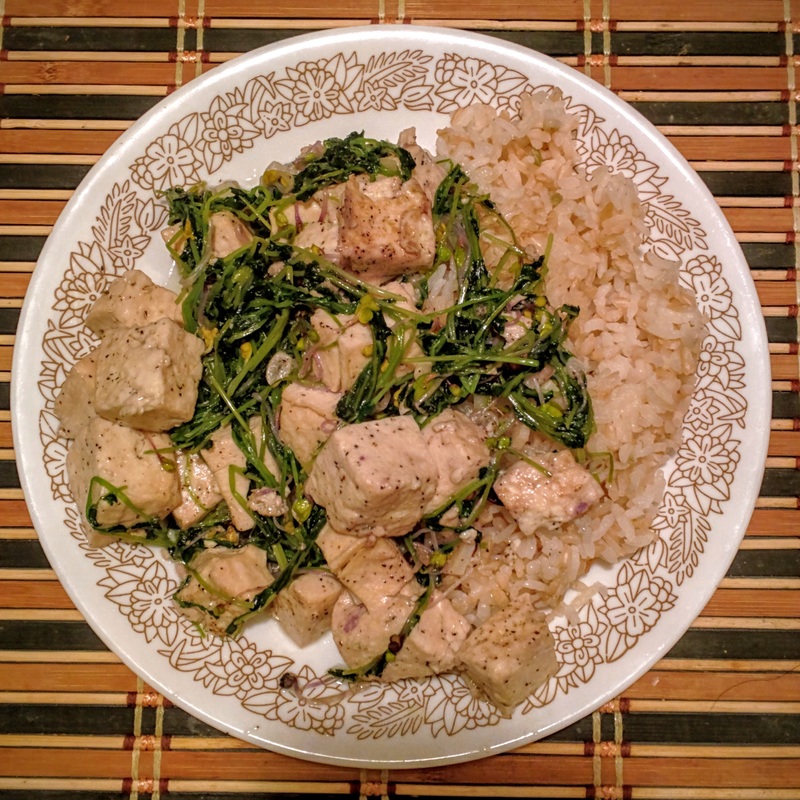 SIP wick in water tank below growing tray SIP wick in water tank below growing tray We introduced our new bottom watered SIP Micro Farm in a blog yesterday, showing the advantages of bottom watering on plant growth. We developed the system to solve a recurring problem with introducing micro farming to people with no experience. Water amount is a critical to success, and it can be difficult to gauge how much water to add in a growing tray by itself. The new SIP system solves this by taking all the guesswork out of watering your micro plants. While undergoing development we often wondered just how our micro plant production would compare to conventional agriculture. It is a point of great concern that agriculture takes up approximately 70% of the worlds water consumption, and in the US it is an even higher 80%. This point hit home as we watched the unfolding drama of being trapped on Mars without fresh food in the recent movie "The Martian". Knowing that our micro plants are extremely fast growing (7-30 days depending on crop) and hyper packed with nutrition (USDA research), we thought it might be interesting to conduct an experiment to figure out just how productive our SIP MicroFarm system is. Note that in the USDA research, the amounts of key nutrients contained in the microgreens studied were 4 to 40 times greater than in mature vegetables. For our experiment, we grew snow peas for 8 days. We measured the water used to grow the peas, and it came out to approximately 8 oz. Our harvest yielded 1.5oz of delicious snow pea shoots. When you do the math, it calculates to taking less than a gallon of water to grow a pound of snow peas shoots!
Water Required to produce one pound of California foods (University of California Agricultural Extension, working with livestock farm advisors) tomatoes & lettuce 23 gallons potatoes 24 gallons carrots 33 gallons apples 49 gallons chicken 815 gallons beef 5,214 gallons Now consider that these pea shoots have 7 times more Vitamin C than blueberries, 8 times more folic acid than bean sprouts, and 4 times more Vitamin A than tomatoes, and you can see why we are excited by these results. Our initial experiment has the potential to turn things upside down!
2 Comments
 Golden Pea Shoots Golden Pea Shoots The benefit dinner at Makena Resort this weekend was a huge success with all seats sold out well in advance. An earlier blog post pointed to the development of some new products that would work with their sushi theme. Today we would like to share pics of our new products that we unveiled for that dinner. Small batch production was key to getting this right and remains our methodology in development. Our new MicroFarm SIP self watering system was at the bottom (punny one ... lol) of this. We have discovered some significant advantages in our new designs and will be blogging about it later today on our sister MicroFarms site. OK, if you have been following this blog, you know we have been working on all sorts of pea shoots recently. We are also growing out some great radishes and using a different technique to produce almost translucent shoots know as Kaiware. With all the crops and experimentation I noticed tonight that we had 3-4 full trays all growing their second crops out in our hill garden. Didn't want to let that go to waste, so here is what we came up with ... Call it Pea Shoot Kaiware Tofu ... this dish was AWESOME but could be costly unless you grow these guys yourself, but here goes. We took some olive oil and cut up several cloves of fresh garlic (the more the merrier) and heated on medium heat to get the garlic into the oil. Sprinkled with sea salt and pepper so we would coat the tofu with a flavorful outside. Sauteed the pea shoots and Kaiware (radish shoots) and created quite the taste mix as the pea shoots we used were snow peas, so it was like a snow pea with garlic and radish saute. We then added the tofu and you can see how the mix coated the tofu pieces in the final dish which was served over a mix of white and brown rice. This is a keeper and as a basic starter, you can add all sorts of micros or full vegies or sprouts. Highly recommeded.
|
UrbaformUrbaform is a technology integrator and developer specializing in food production in the urban environment ... Archives
February 2020
Categories |





 RSS Feed
RSS Feed